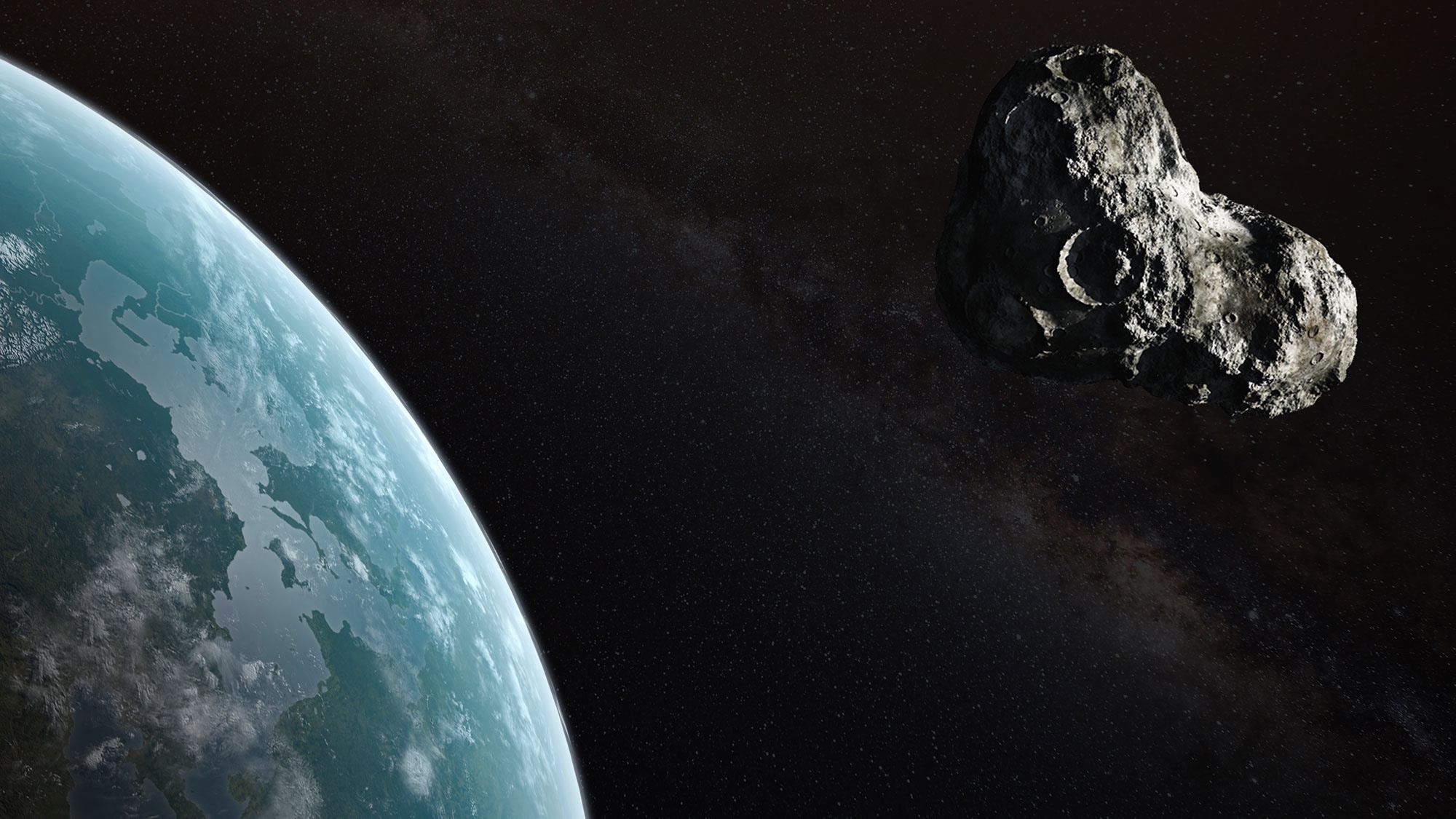An Asteroid Bigger Than the Empire State Building Will Pass Earth Soon. But Don't Worry.
On Aug. 10, Asteroid 2006 QQ23 will fly within 0.049 astronomical units (4.6 million miles) of Earth at about 10,400 mph (16,740 km/h). This might not seem close, but it is close enough to classify the object as a near-Earth asteroid. Additionally, because it is within 0.05 astronomical units (4.65 million miles), it is close enough to be labeled as potentially hazardous.
The space rock measures about 1,870 feet in diameter, which is greater than the height of the Empire State Building, which stands 1,454 feet tall. Now, while it might seem unnerving that a "potentially hazardous" asteroid about the size of a landmark building is coming close to Earth (or relatively close by cosmic standards), we shouldn't worry about the rock crashing into our planet. The object is "more or less benign," Lindley Johnson and Kelly Fast, who track near-Earth objects with NASA's Planetary Defense Coordination Office, told CNN.
Related: Space Rocks! Potentially Dangerous Asteroids in Pictures

NASA tracks comets and asteroids that veer close to Earth, not because they are imminent threats, but rather to ensure that they do not become threats. Every year, about six space objects about the size of Asteroid 2006 QQ23 pass by Earth, making this close approach a routine event.
Currently, there are about 900 near-Earth objects measuring more than 3,280 feet, much larger than Asteroid 2006 QQ23, in our solar system, according toNASA JPL's Center for near-Earth object studies.
Now, while NASA doesn't think that an asteroid will crash into Earth anytime soon, the agency does monitor near-Earth objects and both NASA and other space agencies are developing efforts to deflect asteroids if they threaten to impact our planet.
In fact, NASA is developing the Double Asteroid Redirection Test, or DART, which will be a planetary defense spacecraft. The agency plans to slam the spacecraft into asteroids that could potentially pose a threat to Earth. This is NASA's first planetary-defense mission and the agency hopes that DART will keep Earth safe from rogue asteroids that might head our way.
Sign up for the Live Science daily newsletter now
Get the world’s most fascinating discoveries delivered straight to your inbox.
- A Fake Asteroid Headed to Earth Can Really Make You Think
- This Scientist Is Creating Fictional Asteroids to Save Humanity
- Even If We Can Stop an Asteroid, We May Not Succeed
Follow Chelsea Gohd on Twitter @chelsea_gohd. Follow us on Twitter @Spacedotcom and on Facebook.
Chelsea Gohd joined Space.com as an intern in the summer of 2018 and returned as a Staff Writer in 2019. After receiving a B.S. in Public Health, she worked as a science communicator at the American Museum of Natural History. Chelsea has written for publications including Scientific American, Discover Magazine Blog, Astronomy Magazine, Live Science, All That is Interesting, AMNH Microbe Mondays blog, The Daily Targum and Roaring Earth. When not writing, reading or following the latest space and science discoveries, Chelsea is writing music, singing, playing guitar and performing with her band Foxanne (@foxannemusic). You can follow her on Twitter @chelsea_gohd.










